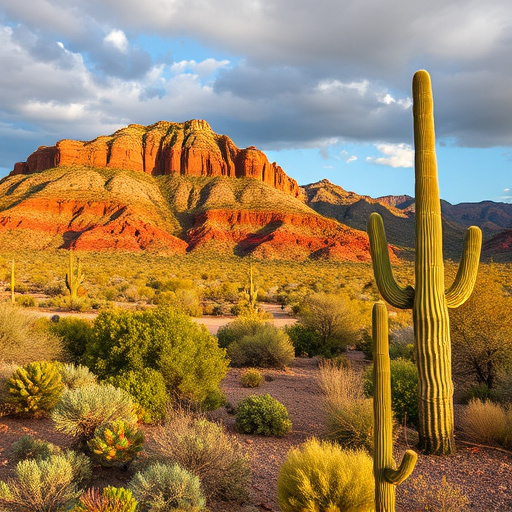Tucson travel tips emphasize responsible harvesting of saguaro cacti, respecting indigenous tribal knowledge and livelihoods. Visitors should educate themselves on ethical practices, seek tribal consent, and support sustainable tourism initiatives to preserve desert ecology and cultural heritage while exploring Tucson's unique landscapes.
“In the heart of Tucson, Arizona, the iconic Saguaro cactus holds immense cultural and ecological significance. This ancient symbol has shaped local tribal traditions for centuries. Our article explores the ethical dimensions of Saguaro harvesting, emphasizing the importance of respecting Native American culture and preserving the desert ecosystem.
We delve into traditional practices, offering Tucson travel tips for tourists and locals alike to ensure sustainable tourism. By understanding the cultural context, we can contribute to the preservation of this unique landscape for future generations.”
- Understanding Saguaro Cultural Significance in Tucson
- Tribal Traditions: A Respectful Approach to Harvesting
- Ethical Practices for Tourists and Locals Alike
- Preserving the Desert Ecosystem: A Shared Responsibility
- Collaborative Efforts: Engaging with Native Communities
- Sustainable Tourism: Enhancing Tucson Travel Experience
Understanding Saguaro Cultural Significance in Tucson
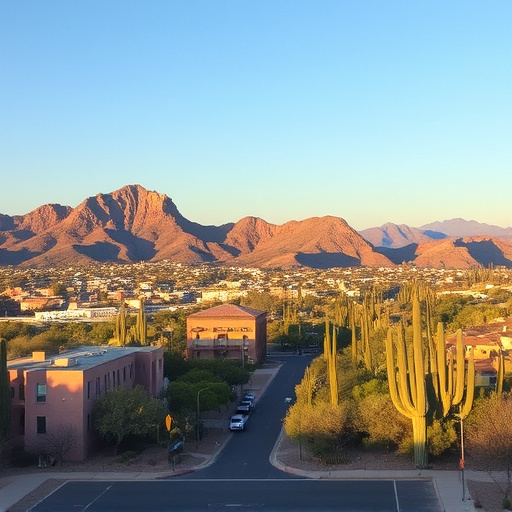
In Tucson, the majestic saguaro cactus holds immense cultural significance for the indigenous tribes who have called this desert home for centuries. For these communities, the saguaro is more than just a plant; it’s a symbol of resilience, tradition, and sustenance. The saguaro’s role in local folklore, ceremonies, and daily life underscores its deep-rooted importance.
Tucson travel tips encourage visitors to approach saguaro harvesting with reverence and respect. Understanding the cultural context behind this practice is essential. Many tribes consider saguaro fruits a gift from the earth, used for traditional medicinal remedies, ceremonial offerings, and sustenance. Harvesting these iconic cacti responsibly means supporting tribal livelihoods, preserving ancient knowledge, and ensuring the sustainability of this precious desert resource for future generations.
Tribal Traditions: A Respectful Approach to Harvesting
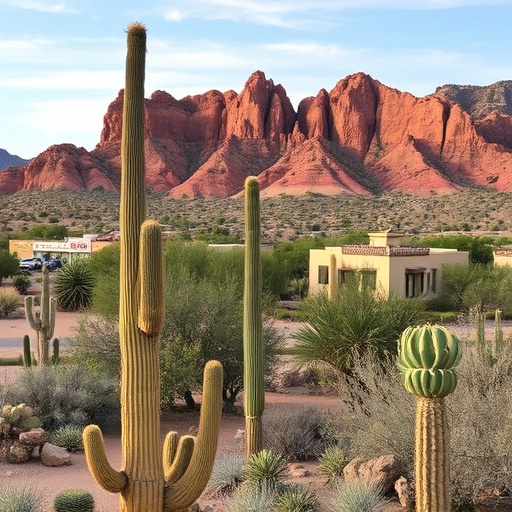
In the vibrant cultural landscape of Arizona, particularly in and around Tucson, the harvesting of iconic Saguaro cacti is deeply intertwined with tribal traditions. These ancient plants hold immense spiritual significance for Native American tribes like the Tohono O’odham, who have relied on them for centuries for food, medicine, and ceremonies. When visiting or engaging in Tucson travel tips related to outdoor activities, it’s crucial to approach Saguaro harvesting with deep respect for these cultural practices.
Tribal members often lead guided walks and tours, sharing their knowledge of the cacti’s life cycle, traditional uses, and sacred sites. This not only ensures ethical harvesting but also supports tribal economies. Visitors who participate in these activities gain a deeper understanding of the desert’s delicate balance and the importance of preserving cultural heritage. Such practices highlight the harmonious relationship between humans and nature that has characterized indigenous communities for generations.
Ethical Practices for Tourists and Locals Alike
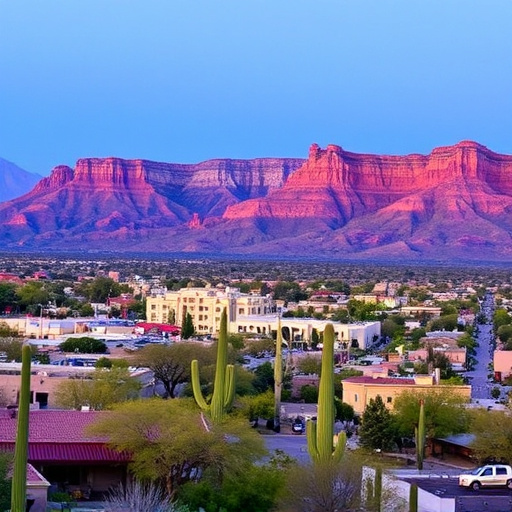
When visiting the stunning landscapes of Tucson, it’s essential to approach Saguaro harvesting with ethical considerations, respecting both nature and indigenous cultural traditions. For tourists and locals alike, a basic understanding of responsible practices is key. Always seek permission from tribal authorities before engaging in any activity related to Saguaros, as these majestic cacti hold profound cultural significance for Native American communities.
Tourists should avoid harvesting or even touching the cacti without proper guidance and authorization. Instead, focus on appreciating their beauty remotely, and support local tourism ventures that promote sustainable viewing experiences. Locals are encouraged to prioritize conservation efforts, ensuring the preservation of these iconic species for future generations. Adhering to these ethical guidelines contributes to a harmonious relationship between visitors and the rich cultural heritage of Tucson.
Preserving the Desert Ecosystem: A Shared Responsibility
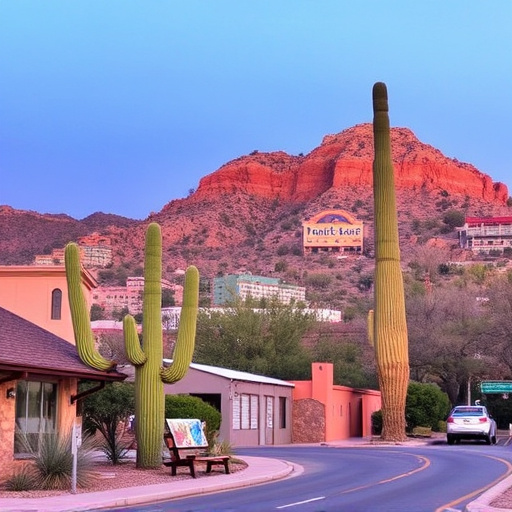
The Saguaro, a iconic symbol of the Sonoran Desert, holds deep cultural significance for Native American tribes like the Tohono O’odham people who have called this region home for centuries. Beyond its cultural importance, preserving the desert ecosystem is a shared responsibility among visitors and locals alike, especially when it comes to harvesting native plants like the Saguaro.
When exploring Tucson and its surrounding areas, remember that responsible tourism involves respecting these cultural traditions and minimizing ecological impact. Following ethical guidelines for Saguaro harvesting, such as obtaining permits and ensuring sustainable practices, helps maintain the delicate balance of the desert ecosystem. Adhering to these principles not only respects indigenous customs but also safeguards the unique biodiversity that makes Tucson a beloved destination for travelers seeking authentic natural wonders and cultural experiences.
Collaborative Efforts: Engaging with Native Communities
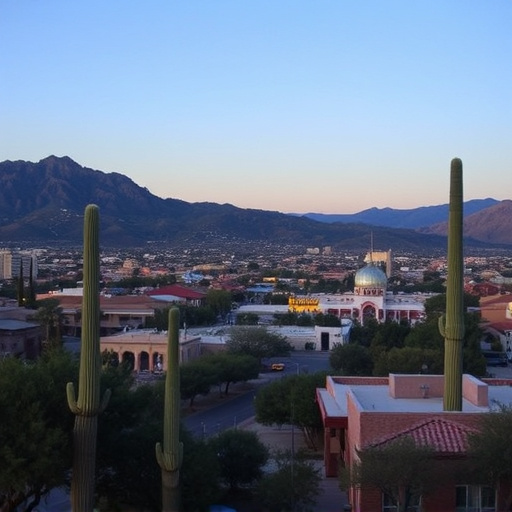
In the realm of Tucson travel tips, understanding and respecting cultural traditions is paramount, especially when it comes to iconic symbols like the saguaro cactus. Collaborative efforts between tourism stakeholders and Native communities have become a game-changer in fostering ethical harvesting practices. By actively engaging with these communities, visitors can gain valuable insights into the cultural significance of the saguaro and ensure their appreciation doesn’t cross boundaries into exploitation.
This harmonious navigation is achievable through open dialogue, educational initiatives, and joint decision-making processes. Native tribes often hold deep knowledge about sustainable harvesting methods and traditional land management practices that have been passed down through generations. Incorporating these perspectives into tourism planning can lead to more meaningful experiences for visitors while preserving the cultural tapestry and soul of Tucson’s landscapes for future generations.
Sustainable Tourism: Enhancing Tucson Travel Experience

Tucson, known for its vibrant culture and stunning desert landscapes, offers visitors a unique blend of natural wonders and historic traditions. When it comes to sustainable tourism, Tucson sets an example for responsible travel experiences. One prominent aspect is the ethical approach to Saguaro harvesting, deeply rooted in the cultural practices of local Native American tribes.
For tourists seeking authentic Tucson travel tips, understanding this cultural sensitivity is key. By respecting traditional beliefs and preserving the iconic Saguaro cacti, visitors contribute to the long-term sustainability of both the region’s natural resources and its cultural heritage. This harmonious balance ensures that Tucson remains a destination where travelers can immerse themselves in a rich cultural tapestry while also safeguarding the indelible spirit of the desert.
In conclusion, respecting and preserving the cultural significance of Saguaros in Tucson involves a blend of traditional knowledge, ethical practices, and collaborative efforts. As visitors and residents alike explore Tucson’s vibrant desert landscape through sustainable tourism, they contribute to the preservation of this unique ecosystem and the continuation of tribal cultural traditions. Embracing these values ensures that Tucson maintains its rich natural and cultural heritage for future generations, making it an even more captivating destination for all who seek to experience the wonders of the Sonoran Desert. These Tucson travel tips promote a harmonious relationship between visitors and the local environment, fostering a truly enriching travel experience.
